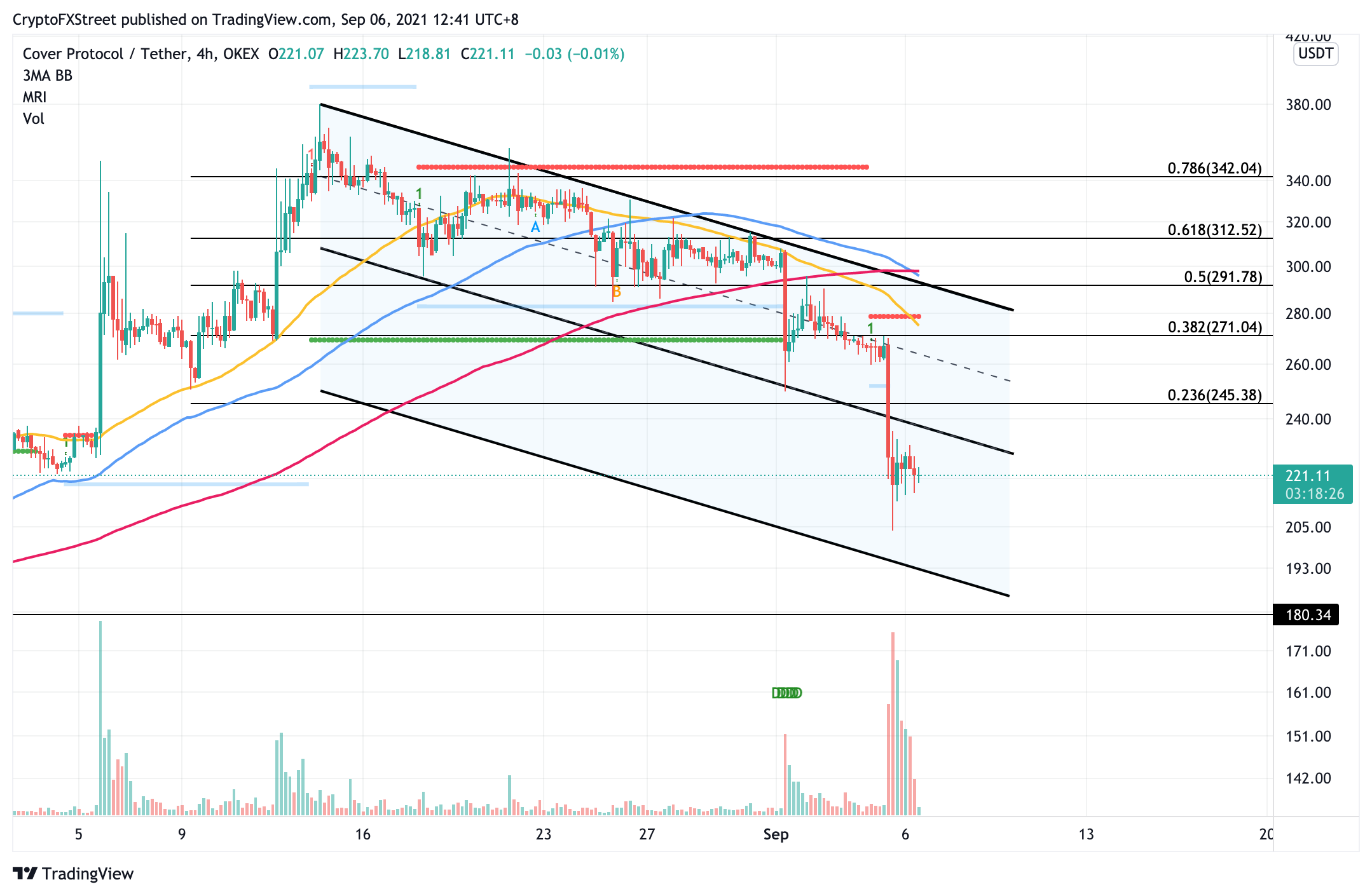- Cover Protocol is shutting down as developers quit the project.
- The DeFi protocol suffered a major hack last year, leading to the team announcing the end of the insurance project.
- COVER price suffered a 25% crash since the announcement was made, as users were advised to withdraw funds as soon as possible
Decentralized finance insurance protocol Cover is closing its doors, as its core contributor announced on September 5 that it is the official end of the project. After the team reviewed the protocol’s path forward, the final decision was made to shut down after its launch around a year ago.
Embattled Cover faces unfavorable state of affairs
Cover Protocol allowed investors to lock up Cover tokens as collateral. In turn the users would be able to receive tokens as an insurance payout if the DeFi protocols they invested in were hacked or rug-pulled.
A few months after its launch, Cover encountered a minting hack that left its customers uncovered by its insurance policies. The hacker subsequently returned the stolen 4,350 ETH to the protocol, sending a warning message attached to the transaction suggesting that the firm take care of its business. The DeFi insurance firm redistributed the funds to its users but witnessed its token’s value fall by 96%.
Earlier this year, Yearn.Finance severed ties with Cover, adding to the unfavorable circumstance the insurance project was already facing.
A core contributor to Cover Protocol, DeFi Ted announced on September 5 that the project would be shutting down. The project leader also said that the team will disperse the remaining treasury funds to token holders as of block 1,316,680. He further explained that the core developers suddenly left the project and advised users to withdraw funds from Cover protocols immediately.
COVER fell over 25% after the announcement was made, as a huge spike a selling volume was witnessed, taking the token to a swing low of $203.
Cover price plummets as investors exit the dead protocol
Cover price lost 25% of its value after the project revealed that it was shutting down. Selling volume skyrocketed as investors rushed to exit positions. COVER has continued to trend downward in a descending parallel channel pattern since August 14.
COVER eventually sliced below the lower boundary of the chart pattern on September 5, revealing its vulnerability for a 19% plunge. Although selling activity seemed to have reduced, Cover price could still be headed lower, given the extraordinary circumstances the project is facing.
COVER/USDT 4-hour chart
The next target for the bears is at the downside trend line of the lower parallel channel at $192. Further selling pressure could see COVER reach the July 22 low at $180 before falling further.
There seems to be little hope for Cover price. Should it miraculously recover, resistance will emerge at $235, at the lower boundary of the governing technical pattern, which acted as support for COVER for nearly a month.
Note: All information on this page is subject to change. The use of this website constitutes acceptance of our user agreement. Please read our privacy policy and legal disclaimer. Opinions expressed at FXstreet.com are those of the individual authors and do not necessarily represent the opinion of FXstreet.com or its management. Risk Disclosure: Trading foreign exchange on margin carries a high level of risk, and may not be suitable for all investors. The high degree of leverage can work against you as well as for you. Before deciding to invest in foreign exchange you should carefully consider your investment objectives, level of experience, and risk appetite. The possibility exists that you could sustain a loss of some or all of your initial investment and therefore you should not invest money that you cannot afford to lose. You should be aware of all the risks associated with foreign exchange trading, and seek advice from an independent financial advisor if you have any doubts.
Recommended Content
Editors’ Picks

Bitcoin Weekly Forecast: BTC remains calm before a storm
Bitcoin price has been consolidating between $85,000 and $88,000 this week, approaching the lower boundary of the consolidation range when writing on Friday. A K33 Research report explains how the markets are relatively calm and shaping up for volatility as investors absorb the tariff announcements.

Donald Trump’s tariff policies set to increase market uncertainty and risk-off sentiment
US President Donald Trump’s tariff policies are expected to escalate market uncertainty and risk-off sentiment, with the Kobeissi Letter’s post on X this week cautioning that while markets may view the April 2 tariffs as the "end of uncertainty," it anticipates increased volatility.

Ethereum Price Forecast: Whales increase buying pressure as developers set April 30 for Pectra mainnet upgrade
Ethereum developers tentatively scheduled the Pectra mainnet upgrade for April 30 in the latest ACDC call. Whales have stepped up their buying pressure in hopes of a price uptick upon Pectra going live on mainnet.

BTC stabilizes while ETH and XRP show weakness
Bitcoin price stabilizes at around $87,000 on Friday, as its RSI indicates indecisiveness among traders. However, Ethereum and Ripple show signs of weakness as they face resistance around their key levels and face a pullback this week.

Bitcoin: BTC remains calm before a storm
Bitcoin (BTC) price has been consolidating between $85,000 and $88,000 this week, approaching the lower boundary of the consolidation range when writing on Friday.

The Best brokers to trade EUR/USD
SPONSORED Discover the top brokers for trading EUR/USD in 2025. Our list features brokers with competitive spreads, fast execution, and powerful platforms. Whether you're a beginner or an expert, find the right partner to navigate the dynamic Forex market.
